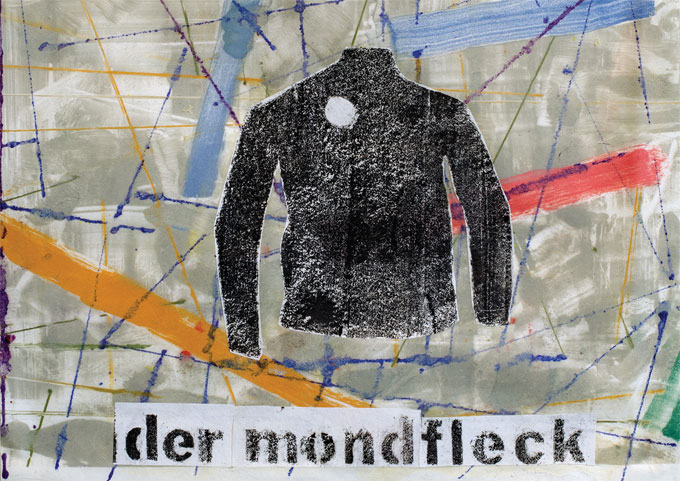Drunk With Moonlight
by Jan Jezioro

The Buffalo Chamber Players meet Pierrot Lunaire
In their continuing tradition of offering uniquely programmed concerts of some of the most adventurous music in the classical repertoire, the Buffalo Chamber Players will open their sixth season at their home in the Buffalo Seminary on Bidwell Parkway on Wednesday, October 24 at 7:30pm, with an evening of music composed by Arnold Schoenberg. Schoenberg’s seminal work, Pierrot Lunaire, for voice and mixed ensemble, will be performed in celebration of the 100th anniversary of its first performance on October 16, 1912, in a performance that will include video projections created especially for this anniversary celebration by the Buffalo-based visual artist Mark Lavatelli.
The Grammy-nominated and UB-based soprano Tony Arnold, who has earned an international reputation for her interpretations of modern music, joins the ensemble for this performance.
The program will also include Schoenberg’s most successful early composition, the 1899 work Verklärte Nacht (Transfigured Night), Op. 4, in its original, string sextet version.
Pierrot Lunaire is scored for voice, unspecified in the score, but traditionally performed by a soprano and mixed ensemble, with settings of the German translations of French language texts by the Belgian Symbolist poet Albert Giraud. The work marked a clear departure from 19th-century aesthetics, propelling chamber music into the 20th century with a force that still resonates today.
Giraud took the stock figure of Pierrot from the commedia dell’arte, a type of improvised theatre which flourished in northern Italy and elsewhere in Europe from the 16th century onward. The poems contrast Pierrot’s life in the waking, sun-lit world, “populated by his commedia dell’arte companions, and marked by deformity, degeneracy, avarice, and lust,” with his private, interior world, dominated by moonlight. In Schoenberg’s Pierrot Lunaire the narrator delivers the sometimes violently lurid poems in an expressionist vocal technique known as Sprechstimme, which lies somewhere between singing and speaking, though perhaps closer to speech than to song. While the accompanying atonal music does not use the twelve-tone technique that Schoenberg would only develop eight years later, the highly emotional nature of the musical score illuminating the shocking texts has allowed Pierrot Lunaire to sound fresh, even after a century of existence.
Janz Castelo, artistic director of the Buffalo Chamber Players, says, “We are very excited to collaborate with Mark Lavatelli for this performance. Pierrot Lunaire is an amazing, haunting work that remains fresh and relevant even a century after its premiere. Mark’s art beautifully captures and enhances the fascinating, bizarre world Schoenberg created for us.”
“The brilliant lunacy of Arnold Schoenberg’s Pierrot Lunaire, with its astonishing Sprechstimme, inspired me to mix freely styles and media in crafting the multiple visual interpretations,” Lavatellii says. “By combining abstract elements with representations, repurposing older works, and continuing to develop encaustic monotypes, I’ve created a cryptic journey through Schoenberg/Giraud’s lunar soundscape. Diagonal motives represent variations in pitch and the colors individual instruments at moments of congruence.”
Schoenberg was inspired to compose Verklärte Nacht by a poem of the same name written by Richard Dehmel, and by meeting the woman he would later marry, Mathilde von Zemlinsky, the sister of his teacher, the composer Alexander von Zemlinsky. The emotionally charged, highly chromatic music reflects the poem’s description of a man and a woman walking through a dark forest on a moonlit night, as the woman shares her dark secret with her new lover that she is pregnant with the child of another man. Schoenberg’s score traces the initial sadness of the woman’s confession, followed by her new lover’s somber reflection on her revelation, resulting in his forgiveness and radiant acceptance, all under the spell of the all-pervasive moonlight.
For more information, visit www.buffalochamberplayers.org.
Buffalo Philharmonic Chorus
The Buffalo Philharmonic Chorus will celebrate its 75th anniversary with a free concert under the direction of guest conductor Roland E. Martin, one of Buffalo’s most respected choral conductors, this Sunday, October 21, at 7:30pm, in the Mary Seaton Room of Kleinhans Music Hall.
Martin, who stepped in as the interim conductor of the Buffalo Philharmonic Chorus on very short notice last year, after the controversy resulting from the internal dissension by some members of the group, worked very successfully to rescue the esprit de corps of Buffalo’s most historic choral group, helping to ensure its continued survival.
This celebration performance includes favorites from the past, present and future, including works by European masters like Palestrina, Bach, Handel, and Brahms, as well as more recent works by American composers including Cole Porter, Leonard Bernstein, and Morton Lauridsen, along with a newly commissioned piece by Daniel Brewbaker. Audience members are encouraged to join the members of the chorus for a post-concert reception where you can meet the composer, guest conductor, and singers. While admission to the event is free, donations are appreciated.
Make your free reservations at www.bpchorus.org.
blog comments powered by Disqus|
Issue Navigation> Issue Index > v11n42 (Week of Thursday, October 18) > Drunk With Moonlight This Week's Issue • Artvoice Daily • Artvoice TV • Events Calendar • Classifieds |









 Current Issue
Current Issue